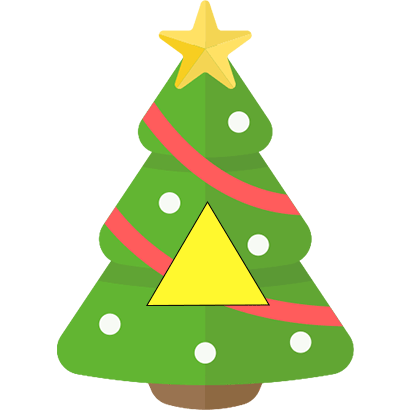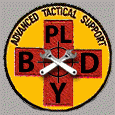Blender 2.80: User Interface
Blender has a revamped user interface, to make it easier to discover and use its many features.
Shortcut Keys
As Blender's functionality has expanded over the years, the number of available shortcut keys for new features and users to map their own has become too small. For that reason a number of shortcut keys were changed to make often used functionality accessible quickly, while assigning fewer shortcut keys by default so users can map their own.
The following keymaps are available:
Blender: default keymap, designed for efficient work in Blender (list of modified shortcuts)
Blender 2.7: keymap with as few changes as possible compared to earlier versions
Industry Compatible: keymap based on typical shortcuts in other 3D apps (overview of shortcuts)
Left Click Select
Blender now uses the left mouse button for selection by default. The keymap for left click select has been re-done in a way that can make it useable across all Blender features, including the new tools in the toolbar. The updated left click select also works with Emulate 3 Button Mouse, which a lot of laptop users use. You can now fully use Blender with a one-button trackpad or with pen input.
It works as follows:
Left click to select (hold shift or ctrl to extend or remove selection).
Right click to open a context menu.
With the default Box Select tool, drag to make a box selection, and use Shift or Ctrl to extend or remove.
Shift-RMB to set the 3D Cursor from any tool, or switch to the 3D Cursor tool and simply click.
W key always returns to the Box Select tool.
Note that we will continue to support right click select, for its efficiency and health advantages when using a keyboard and mouse.
New Theme and Icons
Blender has a redesigned look and feel with a new dark theme and modern icon set, designed to let you focus on your artwork rather than distracting UI elements. The icons are now coloured by the theme, so that we can always ensure that they are readable against bright or dark backgrounds.
For users that prefer a light user interface theme or other variation, various theme presets are available when setting up Blender for the first time, and in the user settings.
Context and Quick Favorites Menus
Throughout Blender, there is now a right-click context menu, which provides quick access to important commands in the given context.
Additional, a new Quick Favorites menu (Q key) is available to gather your favorite commands. By right-clicking on buttons and menus, any command or menu can be added to this popup menu.
Templates
When starting a new file, there is now a choice between multiple application templates:
General: 3D modeling, shading, animation and rendering.
2D Animation: grease pencil based 2D drawing and animation.
Sculpting: simple setup to get started with sculpting.
VFX: motion tracking, masking and compositing for visual effects.
Video Editing: for using Blender as a video editor.
For each template a different startup file can be saved.
Workspaces
Workspaces provide a screen layout for specific tasks like modeling, sculpting or texture painting. They are available as tabs at the top of the window.
Each template provides a default set of workspaces which can be customized. New workspaces can be created, or copied from one of the templates. It is also possible to append workspaces from any .blend file with File > Append. Workspaces can be deleted by right clicking on them.
Multiple workspaces can be opened at the same time, with Window > New Main Window. Then each window can be set to its own workspace, scene and view layer. Each workspace can also have multiple child windows with Window > New Window and View Area > Duplicate Area into New Window in each editor.
Each workspace has an associated object mode, that is automatically activating when switching to that workspace.
Tools and Tool Settings
The 3D viewport has a new toolbar on the left. The new tools in the toolbar are different from existing commands, in that they are activated and stay active until changing to another tool.
Their settings are displayed in a bar at the top of the Window. For tools with more detailed settings (like sculpt brushes), the same tool settings are also available in the Tool tab in the Properties editor.
Some addons will be available as new tools in the toolbar. Others will be moved to tabs and panels in the sidebar on the right of the 3D viewport.
Adjust Last Operation
For tweaking the settings of the previously applied operation, editors now show a panel in the bottom left corner.
These are different than the tool settings in the top bar and properties editor, which control what the next operation does.
Status Bar
At the bottom of windows there is now a status bar. This bar shows:
Information about what mouse buttons and keys do for each editor, mode and tool, and it updates as you hold modifier keys.
Messages and progress indicators for tools and jobs.
Scene statistics.
The statusbar can be optionally be hidden by dragging it down or from the Window menu.
Properties Editor
The properties editor was reorganized to have buttons mainly a single column layout. Panels can also have subpanels now, which more advanced and less commonly used settings collapsed by default.
Presets have been moved into the panel headers to save space.
Next to each property, we now have 'decorators', little indicators that describe the current state of each property, so you can see if it is animated, a keyframe, is driven, linked or overridden.
Properties that point to objects and bones (e.g. constraint targets) now have a new 'Jump To Target' right click menu option that selects the target object/bone.
Preferences
The Preferences window has been re-designed with a vertical source list, and a more organized Properties-like layout using panels and subsections. Many related options, which were previously scattered, have been grouped together in panels. The Theme section in particular is now more structured and flexible, making use of the adaptive layout system.
Popovers
In 2.8 we now have the concept of popovers, which allows us essentially add a panel that spawns as a menu. This allows us to group related features together in a way that can stay out of the way when you are not using them.
For efficient access to single options, hold down the mouse button when clicking on the popover and release it over the option you want to change.
Pie Menus
We now include a set of pie menus by default, to make more efficient use of the keyboard to group related features. Pie menus are fast because you can use them via a gesture. Hold the key, swipe in a direction, and release. Over time, users can gain muscle memory in order to quickly repeat actions.
In the default keymap, pie menus are used for Orientation (,), Pivot (.), viewport (~), shading (z), Snap (Shift-S) and Proportional Editing Falloff (Shift-O)





